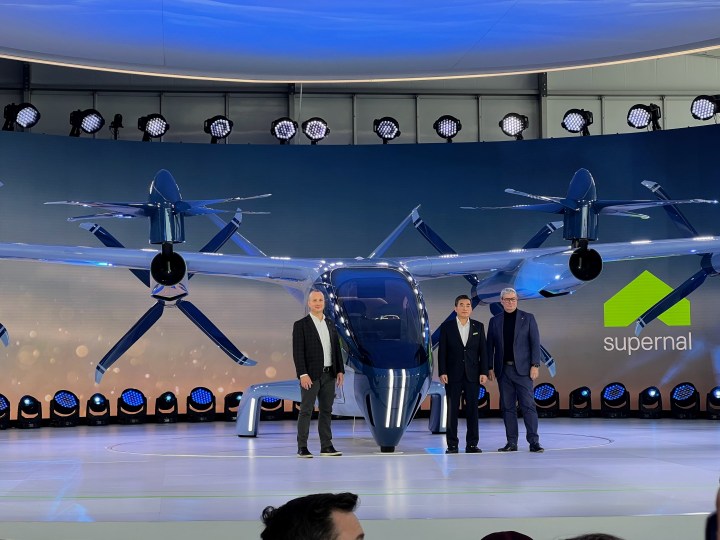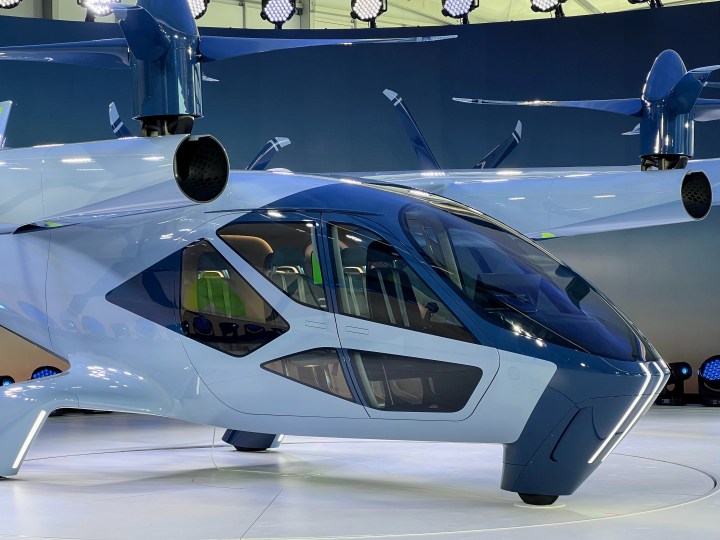

While its earthbound automotive divisions have been stewing up hydrogen from sewage and developing modular vans, Hyundai Motor Group’s (HMG) advanced air mobility company, Supernal, has had some lofty plans of its own. On Tuesday, the first day of CES 2024, Supernal unveiled the S-A2, an electric vertical takeoff and landing (eVTOL) aircraft designed to bypass traffic by shuttling commuters on jaunts of 20 to 40 miles in urban areas.
“The SA-2 takes the best of an airplane, a safe smooth in-flight experience, and merges it with the best of a helicopter – convenience, and the ability to take off and land vertically, even in dense urban environments,” said Supernal CEO Jaiwon Shin. “It’s truly the best of both worlds, and it’s a powered by a battery: comfortable convenient and clean.”

The V-tail aircraft iterates upon the SA-1 concept shown at CES 2020. It uses a total of eight rotors, which pivot up and down to help the aircraft take off vertically, then forward when cruising for efficiency. Supernal claims it will cruise at up to 120 miles per hour, and reach an altitude of 1,500 feet.
A glassy cockpit and body, inspired by the eyes of a bee, is intended to give both pilots and passengers an unobstructed view of the environment below. Inside, the S-A2 can accommodate up to four passengers in modular seats, which are designed to be reconfigured on the fly. According to Shin, the team started with 100 designs before whittling it down to just one, which balances redundancy with efficiency.

Overcoming the relatively low power density of modern batteries in an application that is notoriously thirsty for power presented an engineering challenge for Supernal. According to Ben Diachun, Supernal’s chief technology officer, the S-A2 requires the same amount of power on liftoff as a car accelerating from 0 to 60 in two seconds, but the S-A2 must sustain that output for 30 seconds. Despite that prodigious power use, Supernal claims it emits just 65 decibels on takeoff – no louder than a modern dishwasher. To account for anticipated advances in battery technology, the aircraft has a modular design that should allow for constant upgrades.
Supernal will operate the S-A2 out of so-called vertiports – hubs in dense urban areas. It plans to achieve the same safety standards used in commercial aviation, and work with government aviation authorities to develop operating procedures.
If all goes well, you could see the S-A2 skimming along metropolis skies in 2028, but Supernal hasn’t yet detailed which markets it will launch in.



